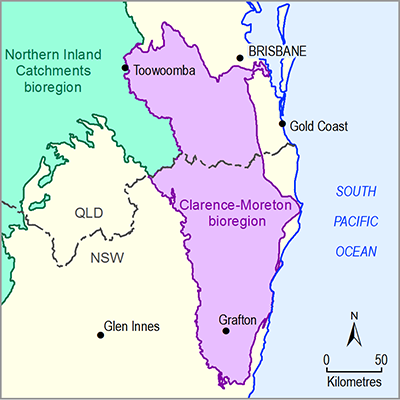The median change in the number of LFS in Figure 16 indicates that the number of LFS across the bioregion is simulated to increase by up to three events. In the smaller Shannon Brook catchment (CLM_004 to CLM_007) the 95th percentile indicates an increase of up to 16 LFS. In this catchment a small change in flow rate (less than 0.03 ML/day decrease in P01, Figure 14) can result in large changes in the number of LFD and LFS.
d/s = downstream of; u/s = upstream of
The circle indicates the median of the posterior predictive distribution, the length of the thick vertical line spans the interquartile range (or 50th percentile prediction interval), and the thin vertical line spans the 90th percentile prediction interval. Nodes are grouped per catchment, ordered from upstream to downstream.
Data: Bioregional Assessment Programme (Dataset 2)

Product Finalisation date
- 2.6.1.1 Methods
- 2.6.1.2 Review of existing models
- 2.6.1.3 Model development
- 2.6.1.4 Calibration
- 2.6.1.5 Uncertainty
- 2.6.1.6 Prediction
- 2.6.1.6.1 Annual flow (AF)
- 2.6.1.6.2 Interquartile range (IQR)
- 2.6.1.6.3 Daily streamflow at the 99th percentile (P99)
- 2.6.1.6.4 Flood (high-flow) days (FD)
- 2.6.1.6.5 Daily streamflow at the 1st percentile (P01)
- 2.6.1.6.6 Low-flow days (LFD)
- 2.6.1.6.7 Low-flow spells (LFS)
- 2.6.1.6.8 Longest low-flow spell (LLFS)
- 2.6.1.6.9 Zero-flow days (ZFD)
- 2.6.1.6.10 Summary and conclusions
- References
- Datasets
- Citation
- Contributors to the Technical Programme
- Acknowledgements
- About this technical product

